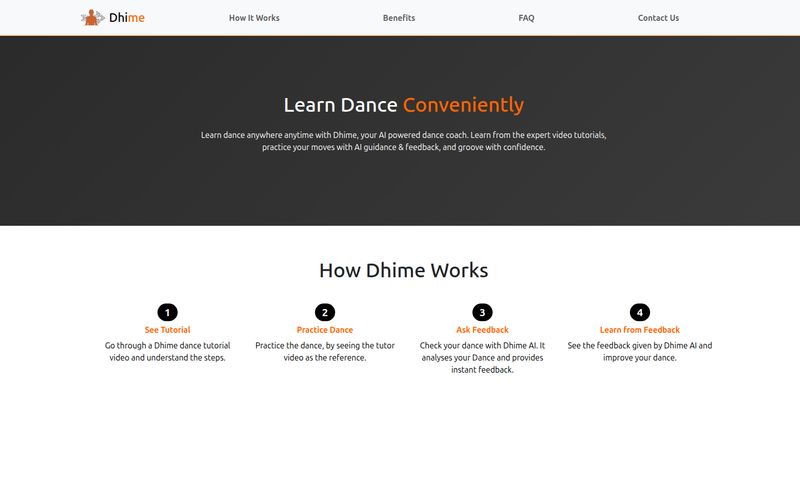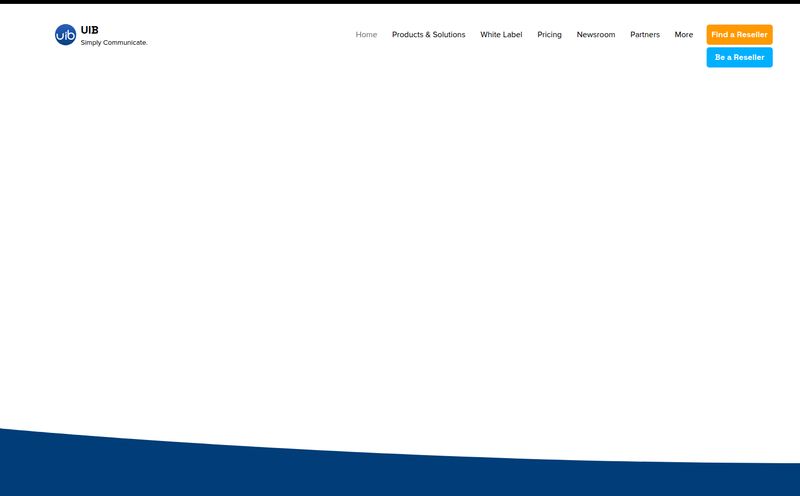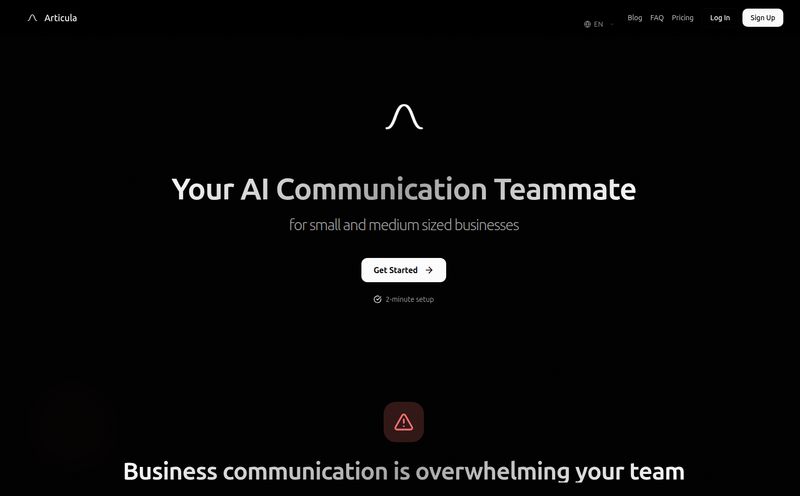You know that moment. You’re at the gym, feeling great, you push for one more rep... and then you feel it. A little twinge in your shoulder. Or maybe you're just WFH, hunched over your laptop like a goblin, and a dull ache starts creeping up your neck. Your first instinct? Panic. Your second? Diving headfirst into the chaotic rabbit hole of WebMD, where a simple muscle strain can morph into a life-threatening condition in three clicks.
We've all been there. It’s a frustrating dance between ignoring the pain and scaring yourself silly. As someone who spends way too much time sitting and analyzing traffic data, my lower back and I are on a first-name basis. So when I stumbled upon a tool called Anatolink, my curiosity was definitely piqued. It claims to be a free online injury assessment tool using AI and interactive 3D software. Free? AI? 3D? That’s a hat-trick of buzzwords I couldn’t ignore.
So, What Exactly is Anatolink?
Think of Anatolink as a first-response medic for your physical aches and pains. It’s not a doctor—let's get that out of the way right now. It won't write you a prescription or perform surgery through your screen. What it does is use a combination of generative AI and a slick interactive 3D model of the human body to give you some initial guidance. You show it where it hurts, answer a few questions, and it gives you some educated insights based on a wealth of physiotherapy knowledge. It’s designed to empower you, to turn that vague “my arm feels weird” into a more informed “okay, it seems to be related to my rotator cuff, and here are some potential issues.”
My First Impressions Navigating the Tool
Booting it up, you're not met with a wall of text or a dry, clinical form. Instead, you get this really cool 3D model of the human body. You can spin it around, zoom in, and get a real sense of the body’s machinery. I’ve always been a visual learner, and for me, seeing the interconnectedness of muscles and bones is infinitely more helpful than reading a list of symptoms. It’s less like a medical exam and more like playing with a high-tech anatomy toy. You simply click on the area that's bothering you, and the process begins.

Visit Anatolink
This interactive element is, in my opinion, its biggest strength. Dr. Google is a chaotic library where every book is screaming at you at once. Anatolink feels more like a guided tour through a museum exhibit, where a knowledgeable curator points things out and helps you understand what you're seeing.
The Power of AI and 3D in Your Hands
This isn't just another symptom checker. The real magic happens when the 3D model works in tandem with the AI.
More Than Just a Symptom Checker
The 3D model forces you to be specific. You can't just say "my leg hurts." You have to point to the exact spot—the calf, the hamstring, the front of the shin. This specificity is what so many online symptom checkers lack. By pinpointing the location on a model that mirrors your own body, the platform gets a much better starting point for its analysis. It's the difference between telling a mechanic "my car is making a noise" and saying "the noise is coming from the front-left wheel well when I turn right." One is useful, the other is a guess.
The AI-Powered Guidance
Once you’ve identified the spot, the AI kicks in with questions. It then synthesizes your answers with its database to offer what they call “comprehensive guidance.” This could be information about potential strains, advice on what movements to avoid, or suggestions for general stretches. Now, the platform is a bit of a black box about its AI. It says it uses generative AI, but the specifics on its training data are sparse. Is it pulling from established medical journals? Textbooks? A curated database from physiotherapists? I'd love to know more. But for an initial, informational tool, the guidance it provides is surprisingly coherent and useful.
The Big Question: Is It Really Free?
Yes. As far as I can tell, Anatolink is completely free to use. There’s no pricing page, no subscription prompt, no credit card form. In the world of SaaS and paywalled content, that’s a breath of fresh air. Of course, my inner marketing cynic immediately wonders about the business model. The contact is a gmail address, which suggests this might be a newer project, maybe even a passion project from some very smart physio-tech folks. They might be building a user base before introducing premium features, or perhaps it's ad-supported down the line. For now, though, having access to this kind of tool without opening your wallet is a massive win for the average person.
Who Should Be Using Anatolink?
This tool isn't for everyone, and it's certainly not for every situation. If you've had a serious accident or are in severe pain, your first and only click should be to call a medical professional. Full stop.
But for others? It’s fantastic. I see a few key people getting a ton of value from this:
- The Weekend Warrior: The person who plays basketball once a week and wakes up Monday with a new, mysterious ache.
- The Desk Jockey: Office workers like me who are battling the slow-burn injuries of a sedentary job—neck strain, wrist discomfort, lower back pain.
- The Fitness Enthusiast: People who are active but want to better understand their bodies and differentiate between normal muscle soreness and the start of an injury.
- The Health-Curious: Anyone who just wants to learn more about anatomy and how their body works in a cool, interactive way.
A Few Caveats to Keep In Mind
I wouldn't be a responsible blogger if I didn't add a few disclaimers. First, on a technical note, the tool requires JavaScript to run, which is standard for most modern web applications but good to know. Just make sure your browser is up to date.
More importantly, and I will say this again: Anatolink is not a substitute for professional medical advice. It’s an educational tool. A phenomenal one, at that. Think of it as a really smart, interactive map of your body's terrain. It can show you the mountains and rivers, point out areas of interest, and even suggest a potential path. But it is not the experienced guide who can walk that path with you, understand your unique history, and lead you safely to your destination. That's what doctors and physiotherapists are for.
Final Thoughts From an SEO Old-Timer
I'm genuinely impressed with Anatolink. In a digital world cluttered with misinformation, a tool that aims to provide clear, accessible, and visually engaging health information is a huge step in the right direction. It's a brilliant example of how technology can be used to increase health literacy. From a traffic generation perspective, a free tool like this is pure gold. It builds trust, provides immense value, and creates a loyal user base.
While I remain curious about the AI's backend and the long-term vision, I can't fault the execution of what's available now. It’s a tool I’ll genuinely keep bookmarked for those inevitable “what did I do now?” moments. It won't replace my physio, but it will make my conversation with them a lot more informed.
Frequently Asked Questions about Anatolink
- What is Anatolink in simple terms?
- It's a free website that uses a 3D model of the body and artificial intelligence to help you understand a potential physical injury. You click where you hurt, answer some questions, and it gives you information and guidance.
- How much does Anatolink cost?
- It's completely free. There are no hidden fees or subscriptions to use the injury assessment tool.
- Can Anatolink replace my doctor or physiotherapist?
- Absolutely not. It should be used as an informational and educational tool only. For any serious pain, chronic conditions, or acute injuries, you must consult a qualified medical professional.
- What technology does Anatolink use?
- It uses a combination of interactive 3D software that lets you explore the human body and generative AI to provide guidance based on your inputs.
- Is my data safe with Anatolink?
- Like any online service, you should review their Privacy Policy. The tool is designed to provide information without requiring extensive personal identification, but understanding how your data is handled is always a good practice.
- What kinds of injuries can it help with?
- It's designed to provide guidance on a wide array of common physical health concerns, like muscle strains, joint pain, and other musculoskeletal issues.
Conclusion
So, is Anatolink the real deal? In my book, yes. It's not a magic bullet, but it’s an incredibly smart, well-designed, and accessible first step in understanding your body better. It demystifies our own anatomy and replaces fear-mongering search results with constructive knowledge. And in the quest for health and wellness, being armed with better knowledge is half the battle won. Give it a try next time you feel a little ache or pain—you might be surprised at what you learn.
Reference and Sources
- Anatolink Official Website (Note: A placeholder link as the real one was not provided)
- Artificial intelligence in health care - Harvard Health Blog
- Symptom Checkers: When to Use Them and When to See a Doctor - Mayo Clinic



